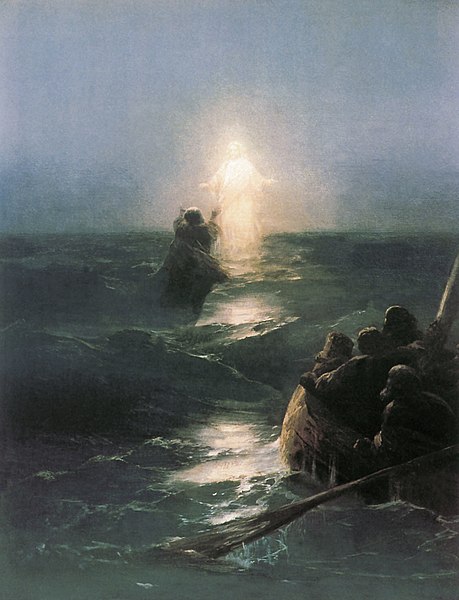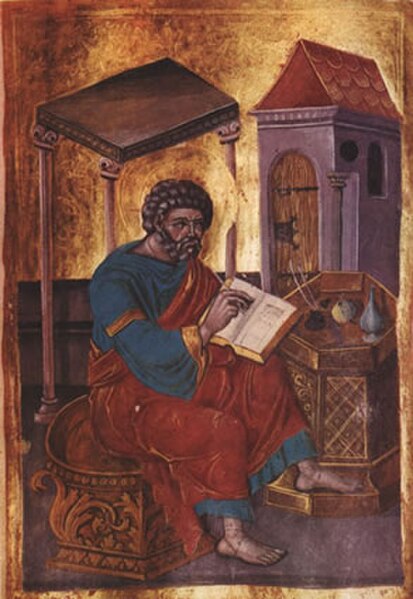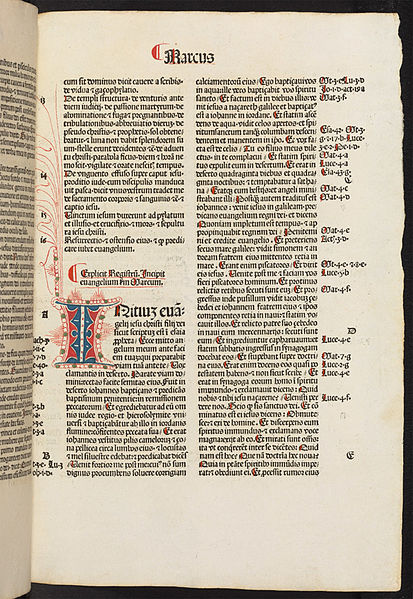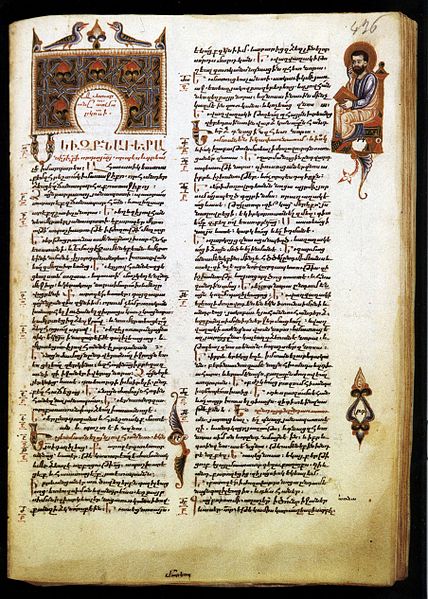Mark 6 is the sixth chapter of the Gospel of Mark in the New Testament of the Christian Bible. In this chapter, Jesus goes to Nazareth and experiences rejection by his own family. He then sends his Apostles in pairs to various cities in the region, where they might also face rejection. Finally, Jesus goes back to the Sea of Galilee and performs some of his most famous miracles, including the feeding of the 5000 and walking on water. This chapter also gives an account of the murder of John the Baptist.
Leaf containing Mark 6:27-54 in Codex Alexandrinus from c. AD 400-440.
Fragment 7Q5 from Qumran.
Supposed head of John the Baptist, enshrined in Rome
Walking on water, by Ivan Aivazovsky (1888).
The Gospel of Mark is the second of the four canonical gospels and one of the three synoptic Gospels. It tells of the ministry of Jesus from his baptism by John the Baptist to his death, the burial of his body, and the discovery of his empty tomb. It portrays Jesus as a teacher, an exorcist, a healer, and a miracle worker, though it does not mention a miraculous birth or divine pre-existence. He refers to himself as the Son of Man. He is called the Son of God but keeps his messianic nature secret; even his disciples fail to understand him. All this is in keeping with the Christian interpretation of prophecy, which is believed to foretell the fate of the messiah as suffering servant.
Andrea Mantegna's St. Mark, 1448
Mark the Evangelist, 16th-century Russian icon
Page from Mark in a Latin Bible dated 1486 (Bodleian Library, Oxford)
First page of the Gospel of Mark: "The beginning of the gospel of Jesus Christ, the Son of God", by Sargis Pitsak (14th century)








